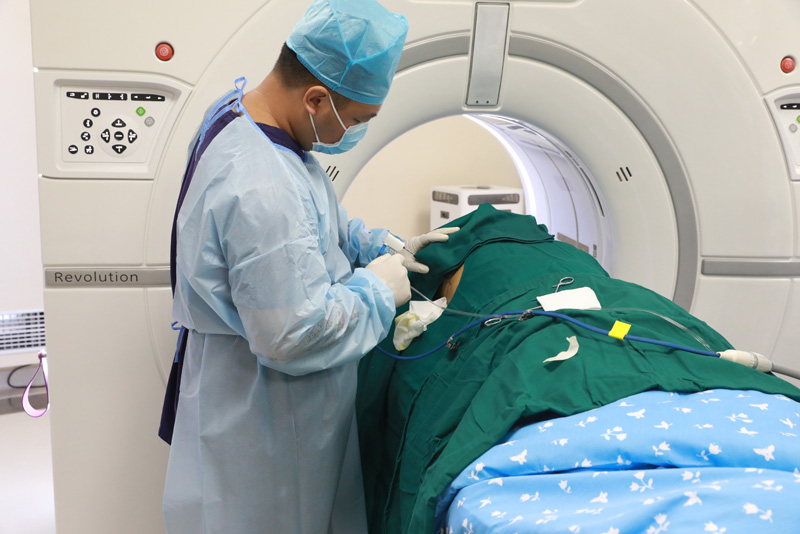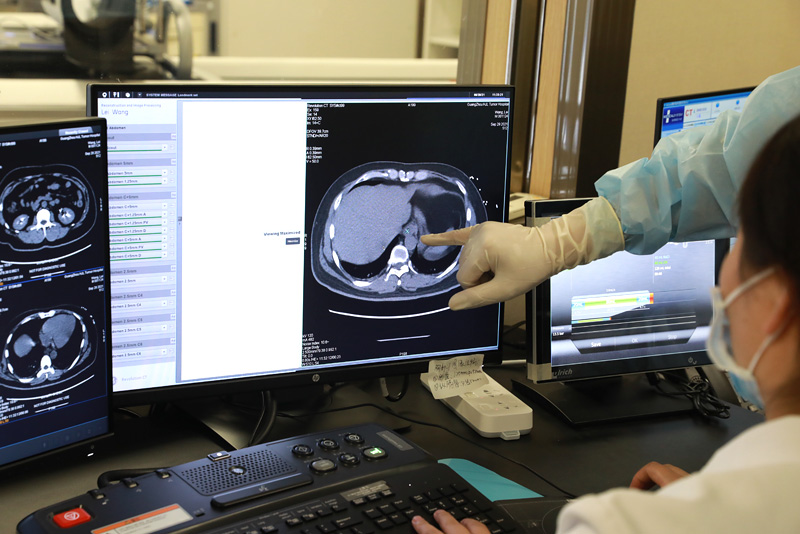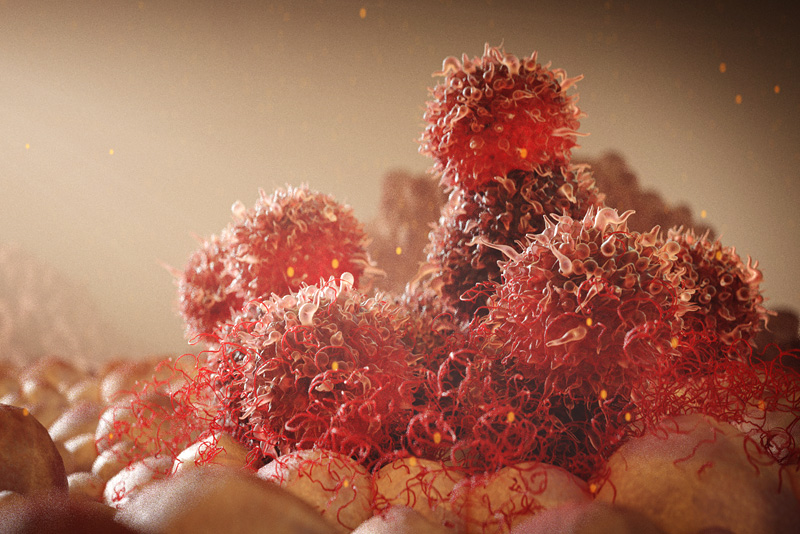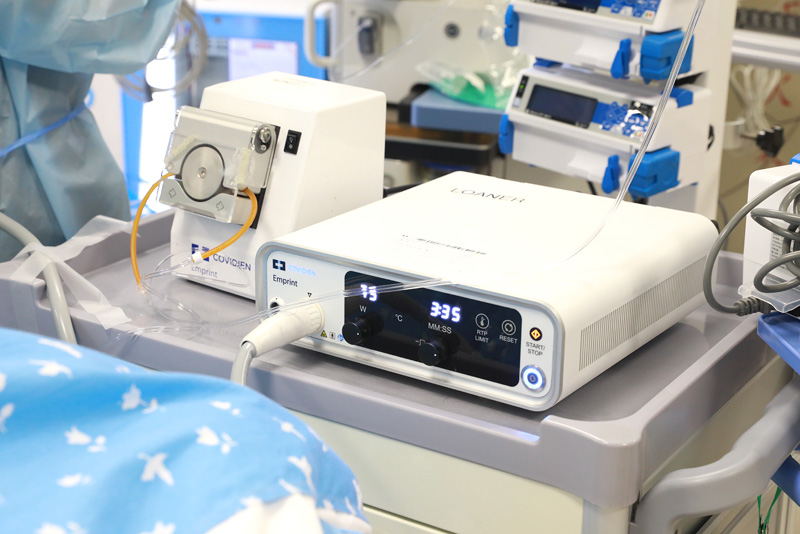Can we kill tumors with a single needle? Come and learn about this highly effective "green" therapy
It is commonly agreed that cancer cells are horrible because they devour normal cells and endanger people's health. Nevertheless, cancer cells are not "fearless", as long as you grasp their "vulnerability", it is completely easy to subdue it!
When it comes to cancer treatment, what firstly come to people's mind are: chemotherapy, radiotherapy, surgery, targeted therapy and immunotherapy. However, these treatment methods either have great toxic side effects or patients fail to meet the therapeutic indications. More importantly, it is a pyrrhic victory with the above treatment methods. While killing tumor cells, they also cause damage to the normal cells, resulting in various complications.
In the past ten years, "precision + minimally invasive" has become a hot spot in the treatment of tumors. At present, Guangzhou Royallee Cancer Center has the qualification to carry out precise minimally invasive interventional therapy in the treatment of various benign and malignant tumors and complications related to tumor treatment. Today, we will first introduce to you a minimally invasive treatment with a wide range of indications, small trauma, few complications, quick recovery and repeated application - microwave ablation.


What is microwave ablation?
Microwave ablation is actually a kind of minimally invasive thermal ablation. The specific treatment method is to percutaneously puncture with a special microwave needle directly into the tumor area under the guidance of imaging equipment such as ultrasound/CT.
And on the tip of the microwave needle, there is a "micro microwave oven" heat-generating area about 1 cm long.It emits a microwave magnetic field, and in the magnetic field, polar molecules such as water molecules and protein molecules in the tumor undergo high-frequency and repeated steering movements. The mutual friction between molecules can rapidly increase the temperature inside the tumor, causing the tumor to rapidly undergo coagulation necrosis (irreversible necrosis of tumor cells at 60°C), to achieve the purpose of burning the tumor cells.
Why can microwave ablation "kill" cancer cells?
As mentioned earlier, cancer is horrible, but as long as you know its "vulnerability", you can defeat the enemy with one move. Microwave ablation precisely takes advantage of the "heat-sensitive" characteristic of cancer cells.
Studies have pointed out that the heat resistance of cancer cells is very poor, and when a certain temperature is reached, cancer cells will undergo apoptosis.

Also, the tumor tissue does not have a perfect vascular structure and function. Instead, the tumor blood vessels are disordered, the blood flow is less affected by temperature, and the heat dissipation is poor. When it encounters external heating, a large amount of heat accumulates in it, and the tumor tissue and protein is degenerated and necrotic, and cells will be destroyed, followed by apoptosis.
With microwave ablation, it can reach a high temperature of 60°C-150°C in a few minutes, achieving the purpose of inactivating cancer cells in a short time.
The advantages of microwave ablation
Even though there are many treatment methods for tumor, why does microwave ablation "stand out", and become an internationally recognized ideal choice for patients with various solid tumors such as small liver cancer, liver metastases, and abdominal tumors, and even considered to be a good news for patients with early lung cancer and lung nodules who are not suitable for or refuse surgery?
The main reason is that microwave ablation has the advantages of being precise, safe and effective, minimally invasive, acceptable for repeated application, simple and easy to operate, low cost, less pain for patients, and high postoperative quality of life.

And tumor microwave ablation can be carried out in combination with surgery, radiotherapy, chemotherapy, targeted therapy, immunotherapy and other treatment methods according to the actual condition of the patient, so as to achieve the optimal treatment quality and effect.
Which cases are suitable for microwave ablation?
Usually, microwave ablation is an alternative for solid tumors with non-empty organs, such as lung cancer, pancreatic cancer, liver cancer, liver and lung metastases, solid metastases in the thoracic and abdominal cavity, etc., and patients who are not suitable for surgery and systemic radiotherapy and chemotherapy due to various reasons.
Some patients may be concerned that the size and location of the tumor will affect their choice of this operation. It is generally believed that microwave ablation has no absolute limit on the location and size of the tumor, but it is most suitable for patients with small tumors but not too many, or large solid tumors still confined to the organs.
The ideal ablation target is a single lesion less than 5cm or 3-4 lesions less than 3cm. Larger lesions can also be treated by ablation, but to achieve the purpose of complete ablation of the lesions, the ablation must be repeated several times, and the diameter of one time is not greater than 3cm.
With the development of the aging population, some patients with advanced age and poor cardiopulmonary function who cannot tolerate surgical, can also choose microwave ablation to destroy tumors if the conditions are met.
·FAQ·
Q: Can microwave ablation be used for recurrent tumors after radiotherapy and chemotherapy?
A: For some tumors that recur after radiotherapy and chemotherapy, radiotherapy can no longer be performed in the same site within one year, while microwave ablation can be applied multiple times within a week.
Q: Do patients have any adverse reactions after microwave ablation?
A: After treatment, patients may have mild reactions such as early low-grade fever, with obvious discomfort from radiotherapy and chemotherapy. If patients have any other discomfort, seek medical attention as soon as possible.
